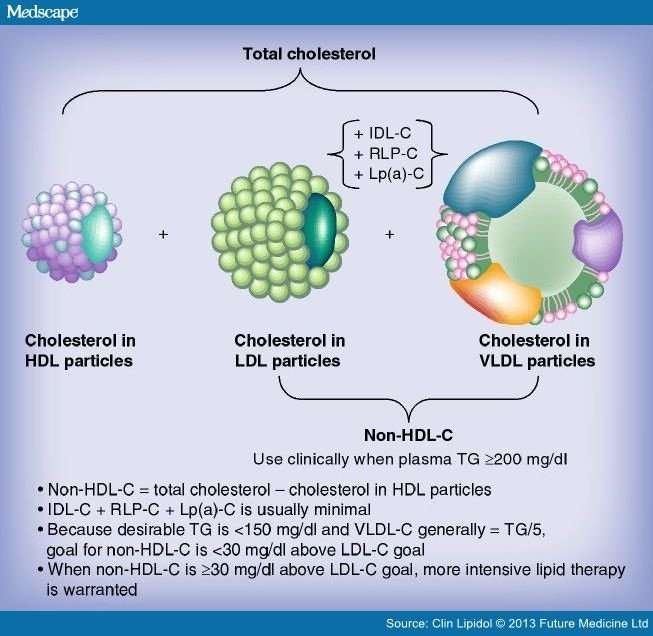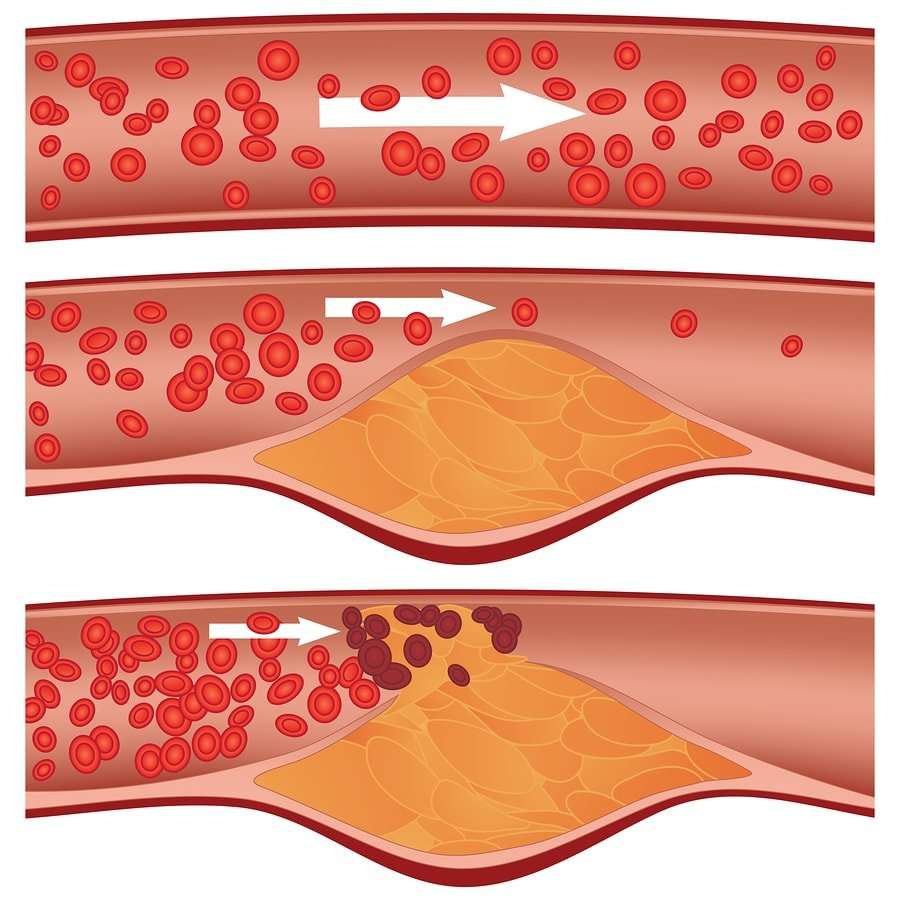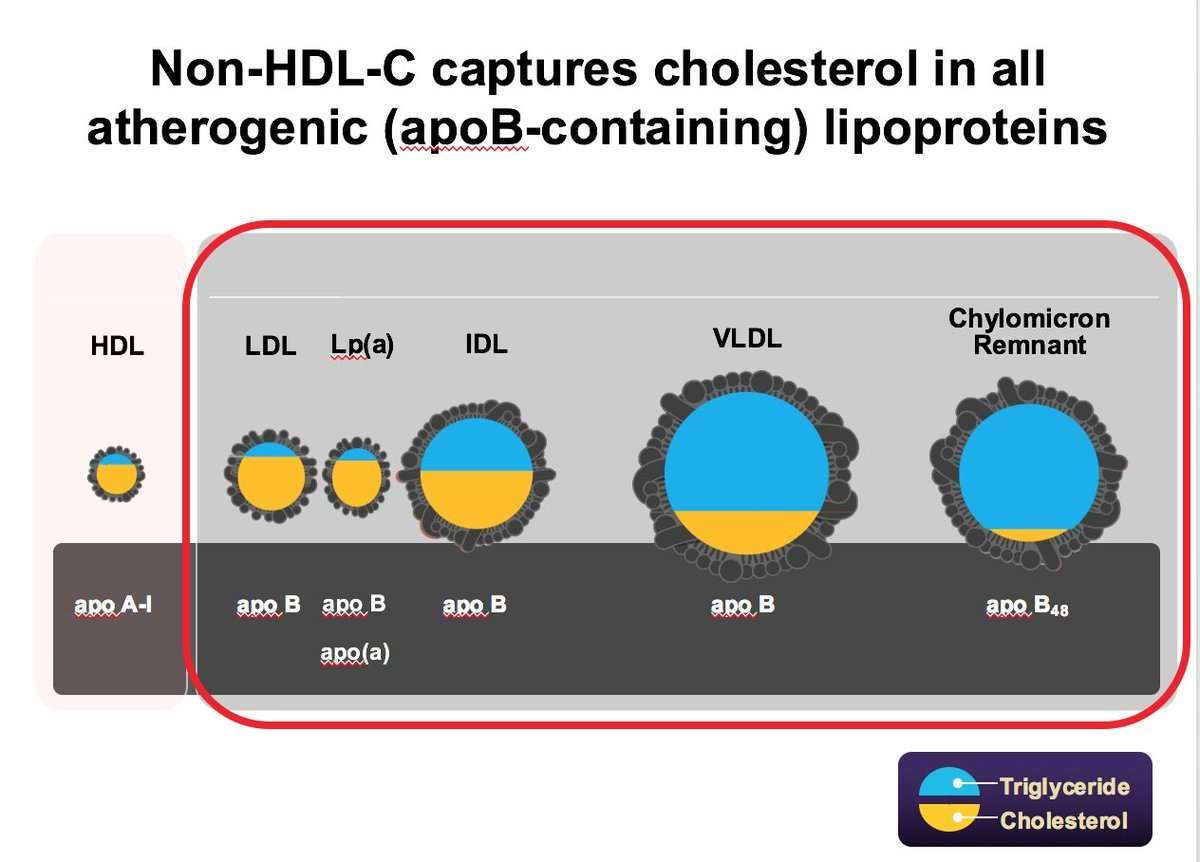What Is This Test
This blood test checks the levels of cholesterol in your body. A lipid panel will show the levels of your total cholesterol, your LDL cholesterol, and your HDL cholesterol. In general, the higher your total and LDL cholesterol levels, the higher your risk for coronary heart disease. But some heart attacks happen in people who don’t have a high LDL level.
Some researchers believe that measuring your non-HDL cholesterol levels gives a better assessment of the risk for heart disease than measuring only LDL. This is especially true if you have high triglycerides. Your non-HDL cholesterol level is found by subtracting your HDL cholesterol from your total cholesterol.
How To Lower Non
Lowering non-HDL cholesterol always begins with lifestyle therapy, usually aimed at lowering triglycerides.
Traditionally, a reduction in total calories, especially saturated and trans fatty acids, is recommended in combination with exercise.
Reducing sugar and carbohydrate consumption can also be very useful in lowering triglycerides and non-HDL cholesterol, particularly in individuals with abdominal obesity or metabolic syndrome .
Foods that are high in omega-3 fatty acids may also be useful. Fatty fish such as salmon, sardines, mackerel, and herring are rich in omega-3.
Moderate physical activity can help raise HDL cholesterol and lower non-HDL cholesterol .
Quitting smoking will improve HDL cholesterol and reduce non-HDL-cholesterol.
Successful reduction of elevated non-HDL cholesterol may also be achieved with medical therapy.
Statin drugs lower total and LDL cholesterol leading to a reduction in non-HDL cholseterol.
Triglyceride lowering drugs such as omega-3 fatty acid preparations, fibrates, and niacin are sometimes used as well.
Comparison Of Changes In Non
Levels of LDL-C and non-HDL-C decreased significantly at 2 and 4 h after a daily breakfast . Non-fasting LDL-C and non-HDL-C in CHD2 group were significantly lower than those in CHD1 group . When the data at 2 and 4 h after a daily meal as a whole were used as non-fasting data for further analysis, non-fasting reductions in LDL-C were 0.47 and 0.46 mmol/L, and non-HDL-C were 0.26 and 0.24 mmol/L in CHD1 and CHD2 groups, respectively . The percentages of reduction in LDL-C were 17.1 and 18.5%, and 7.2 and 7.7% in non-HDL-C in CHD1 and CHD2 groups, respectively . There were no significant differences in the absolute reduction or percentage of reduction in LDL-C or non-HDL-C level between the groups. However, non-fasting reductions in LDL-C were greater than those of non-HDL-C .
Non-fasting albumin levels were measured in 89 patients among all CHD patients. There was no significant change in the albumin level after a daily breakfast , whereas the post-prandial TC, HDL-C, LDL-C, and non-HDL-C level dropped significantly .
Table 2. Changes in levels of blood lipids and albumin after a daily breakfast in 89 CHD patients.
Don’t Miss: Are Mussels High In Cholesterol
Why Cholesterol Matters For Women
Reviewed By:
Erin Donnelly Michos, M.D., M.H.S.
Ah, cholesterol and triglycerides. We hear about them all the time. Even foods that might seem good for you on the surface, like fruit-filled yogurt or bran muffins, can contribute to abnormal levels if they contain too much saturated fat or refined sugar, says Erin Michos, M.D., associate director of preventive cardiology at the Ciccarone Center for the Prevention of Heart Disease.
Whats more, many women are at risk for high cholesterol and dont realize it. Approximately 45 percent of women over the age of 20 have a total cholesterol of 200 mg/dl and above, which is considered elevated but a survey by the American Heart Association found that 76 percent of women say they dont even know what their cholesterol values are, Michos says.
Scarier still: Triglycerides, a type of blood fat typically measured alongside cholesterol, are even more risky in women compared with men. This is a problem because womens cholesterol levels can fluctuate quite a bit after menopause and tend to increase with age, putting us at greater risk of heart disease and stroke. Knowing your cholesterol numbers and how to control them is a big step toward staying healthy.
Read Also: Ldl Cholesterol Effects
What Are The Normal Values For Hdl And Non

The values considered normal are:
However, these values may vary depending on each person’s health and risk of vascular disease. This risk is estimated by the doctor, during the consultation, according to the person’s chronic diseases and lifestyle.
The greater the risk, the greater the requirement for cholesterol control. Rates should be lower to lessen the risk of clogging.
High blood pressure, diabetes, smoking, weight gain and physical inactivity are factors that increase this risk. Therefore, the doctor can guide the most appropriate value of non-HDL cholesterol for each one individually.
You May Like: Are Mussels High In Cholesterol
Why Is Your Non
Total cholesterol level isnt a good indicator of CVD risk because it includes both good and bad cholesterol levels. The medical community used to think that LDL level was the most important indicator of CVD risk. Researchers found the ratio of total cholesterol to HDL cholesterol is a better indicator of CVD risk than just LDL levels alone.
More recently, researchers have found that non-HDL levels are as good as, or better than, both LDL levels and cholesterol ratios for predicting a higher risk of CVD. .
Why Do I Need This Test
High cholesterol is one of the things that can tell you how likely you are to get heart disease, so it’s important to know your numbers. When your LDL cholesterol level is high and HDL cholesterol is low, you may be at risk for a heart attack or stroke.
Here’s a breakdown of LDL cholesterol levels and health:
-
Less than 70 milligrams per deciliter this is your goal if you’re at very high risk for a heart attack
-
Less than 100 mg/dL the goal for people with heart disease or diabetes
-
100 to 129 mg/dL near or above the ideal level
-
130 to 159 mg/dL borderline high
-
160 to 189 mg/dL high
-
190 mg/dL and above very high
Here’s a breakdown of total cholesterol levels and health:
-
Less than 200 mg/dL you are at low risk for heart disease
-
200 to 240 mg/dL borderline high
-
240 mg/dL and above high
Ideally, HDL cholesterol should be above 40 mg/dL for men and above 50 mg/dL for women. The higher your HDL level, the better.
The test for non-HDL cholesterol isn’t usually part of screening for your total cholesterol. But if you have high blood pressure, diabetes, or other risks for heart disease, your chances of having a heart attack are higher than normal. In these cases, your provider may calculate your non-HDL cholesterol, too.
Recommended Reading: Are Pork Chops Heart Healthy
Clinical Characteristics And Fasting Blood Lipids In Two Chd Groups
The baseline characteristics of the CHD patients are shown in Table 1. Both groups were similar in terms of age, sex, body mass index, percentages of hypertension, current smoking, and diabetes mellitus. There were 56.5% patients taking statins < 1 m and 43.5% patients without statins treatment before admission in CHD1 group. Fasting serum levels of TC, LDL-C and non-HDL-C in CHD2 group were significantly lower than those in CHD1 group . The differences in fasting serum TG and HDL-C levels between the groups did not differ significantly . The proportion of STEMI and NSTEMI patients in CHD2 group was less than that in CHD1 group . However, the proportion of schemic cardiomyopathy in CHD2 group was more than that in CHD1 group . The differences in vascular disease did not differ significantly .
Table 1. Baseline characteristics of the study population.
According to the time of statin using before admission, all patients were divided into three groups: CHD1 group , CHD2 group and CHD3 group , which were added as the supplement data in the new manuscript due to the small sample size in this study .
What Is A Desirable Level Of Non
The treatment goal for non-HDL cholesterol is usually 30 mg/dL above the LDL cholesterol treatment target.
For example, if the LDL-C treatment goal is < 70 mg/dL , the non-HDL cholesterol treatment target would be < 100 mg/dL .
Here you can see how non-HDL-C levels are looked at in terms of risk:
- above 220 mg/dL is considered very high
- 190 219 mg/dL is considered high
- 160 189 mg/dL is considered borderline high
- 130 159 mg/dL is considered near ideal
- below 130 mg/dL is considered ideal for people at risk of heart disease
- below 100 mg/dL is considered ideal for people at very high risk of heart disease
You May Like: Teas That Lower Cholesterol
Fasting Before A Lipid Test
Although a lipid test can be done with or without fasting, you are more likely to get accurate results by fasting, especially if your triglycerides are going to be measured. This means you can have nothing but water for nine to 12 hours before the test.
Once your lipid levels are calculated, a simple mathematical calculation is used to determine your non-HDL levels.
Non-HDL-C is calculated by subtracting total cholesterol from HDL cholesterol. Total cholesterol is made up of triglycerides plus the combination of cholesterol from atherogenic lipoproteins which includes LDL, VLDL, IDL , and lipoprotein-a cholesterol.
Optimal non-HDL levels are below 130 mg/dL for both adult men and women.
Optimal HDL levels are 40 mg/dL for adult men and 50 mg/dL for adult women. Levels below this increase your risk of heart disease.
Optimum triglyceride levels are below 150 mg/dL. Triglyceride levels above 200 mg/dL are especially concerning, as studies show this greatly increases an individuals risk of developing atherosclerosis and heart disease.
How Can You Lower Your Non
If your non-HDL levels are high, you may have an increased risk of developing cardiovascular disease. Talk with your healthcare provider, who may recommend you make some changes in your lifestyle. Cholesterol management almost always starts with lifestyle adjustments.
These kinds of changes might include:
- Losing weightIf you have excess weight or even obesity, losing weight can help you lower your non-HDL levels.
- DietMinimize eating saturated fats and trans fats, which raise non-HDL levels. Eat a diet rich in fiber, vegetables, fruits, whole grains, lean meats, and fish. Consume omega-3 fats, found in flax, avocados, fatty fish, and fish-oil supplements .
- ExerciseRegular aerobic exercise can lower non-HDL levels .
In some cases, lifestyle modifications alone are not enough to lower your non-HDL levels. In that case, your healthcare provider may recommend a cholesterol-lowering medication. Follow your healthcare providers medical advice to treat high cholesterol and prevent cardiovascular disease.
Also Check: Canned Tuna Cholesterol
Find Out Your Heart Age With The Heart Age Tool
Once you have your cholesterol results you can work out your risk of developing heart disease over the next 10 years using the NHS Heart Age Tool. You will get a more accurate result if you know your blood pressure numbers too. The heart age tool is designed for people aged 25 to 84.
Adults age 40-74 are also invited for NHS Health Checks which includes other simple tests to look at your heart health.
What Does The Test Measure

A non-HDL cholesterol test involves at least three components:
- Total cholesterol: This is a measurement of the sum of all kinds of cholesterol in a sample of blood.
- HDL cholesterol: This is a direct measurement of good cholesterol, which is found in high-density lipoproteins. Lipoproteins are particles made up of protein and fat that carry cholesterol in the blood.
- Non-HDL cholesterol: This is a simple calculation made by subtracting the measured amount of HDL cholesterol from the measured amount of total cholesterol.
Non-HDL cholesterol includes multiple kinds of cholesterol that can build up in the arteries and increase the risk of serious health problems. Specifically, non-HDL cholesterol encompasses low-density lipoprotein cholesterol, very low-density lipoprotein cholesterol, intermediate-density lipoprotein cholesterol, and lipoprotein.
Also Check: Whats In Egg Beaters
Other Cholesterol And What They Mean
· Low-density lipoprotein
Sometimes refers to as bad cholesterol, LDL can cause the arteries to become narrow by building on the walls. Trans fats and saturated fats are fats connected to LDL cholesterol and should be greatly reduced in diets.
· High-density lipoprotein
HDL is usually called the good cholesterol because it removes other cholesterol from the arteries, including LDL. While LDL dumps its fat on the walls of the arteries, HDL clears them and other cholesterols. With this fact, experts believed that increasing HDL could reduce the risk of cardiovascular disease.
· Triglycerides:
Triglycerides are fats gotten from foods, and they are crucial because most body fats exist in this form. The level can pile-up when one consumes calories more than the body can burn off, and if not controlled, high triglyceride level presence in the can cause heart disease.
What Affects Cholesterol Levels
There are a variety of factors that can affect cholesterol levels. Some risk factors are within your control, while others are not:
- Genetics: These factors include familial hypercholesterolemia and a family history of heart disease.
- Sex: Males often have higher levels of LDL. After menopause, a woman’s LDL levels can also increase.
- Weight: People who are overweight or obese are at increased risk of having high cholesterol.
- Sedentary lifestyle: Lack of physical activity can increase the risk of overweight and obesity and, in turn, increase cholesterol levels.
- Diet: Overall diet quality can affect cholesterol in a negative way, including eating too many saturated and trans fats and not enough fiber.
- Age: Your body’s ability to clear cholesterol can be impacted as you age.
- Race and ethnicity: There are different rates of high cholesterol based on race/ethnicity and sex, with the highest rates among males in Hispanics and the highest rates among females in non-Hispanic Whites.
- Smoking: Smoking can increase your bad cholesterol and lower your good cholesterol.
- Other medical conditions: Having a previous history of high cholesterol, heart disease, or diabetes can increase your risk of developing high cholesterol.
Don’t Miss: Does Tuna Lower Cholesterol
Difference Between Ldl And Hdl
The main difference between LDL and HDL cholesterol is that LDL is a type of harmful cholesterol whereas HDL is a type of protective cholesterol. Furthermore, LDL transports cholesterol and other fats throughout the body while HDL transports cholesterol and other fats collected from tissues to the liver.
LDL and HDL are two types of lipoproteins classified based on their density. Both are made up of proteins and fats. There are many other differences between LDL and HDL, but its important to know what cholesterol is before looking at these differences.
Read Also: Does Shrimp Raise Your Cholesterol
What Foods Raise Hdl
Start incorporating the following Mediterranean-style and HDL-friendly foods into your daily diet. Olive oil. The type of heart-healthy fat found in olives and olive oil can lower the inflammatory impact of LDL cholesterol on your body. Beans and legumes. Whole grains. High-fiber fruit. Fatty fish. Flax. Nuts. Chia seeds.
Recommended Reading: Does Egg Beaters Have Cholesterol
What Does Hdl Cholesterol Do
HDL clears from the body via the liver. HDL may therefore prevent the buildup of plaque, protect your arteries, and protect you from atherosclerotic cardiovascular disease. It is considered the good cholesterol, and higher levels are better. A good goal to aim for is higher than 55 mg/dL for women and 45 mg/dL for men. The higher your HDL cholesterol numbers, the lower your risk is for heart disease, vascular disease, and stroke.
What Is Non Hdl Cholesterol
NonHDL cholesterol, as its name implies, simply subtracts your high-density lipoprotein cholesterol number from your total cholesterol number. An optimal level of nonHDL cholesterol is less than 130 milligrams per deciliter , or 3.37 millimoles per liter .
Simply so, what does high non HDL cholesterol mean?
What does it mean if your nonHDL cholesterol is high? If your nonHDL cholesterol is high, you may be at a higher risk of developing atherosclerosis, or narrowing of the arteries. It increases your risk of heart disease and: chest pain heart attack.
Similarly, is non HDL cholesterol the same as LDL? It includes both low-density lipoprotein cholesterol and high-density lipoprotein cholesterol. NonHDL this number is your total cholesterol minus your HDL. Your nonHDL includes LDL and other types of cholesterol such as VLDL .
Correspondingly, how do I lower my non HDL cholesterol?
A few changes in your diet can reduce cholesterol and improve your heart health:
What does non HDL mean in a blood test?
Your nonHDL cholesterol is your total cholesterol minus your HDL cholesterol. It is helpful to know your nonHDL cholesterol because your level of nonHDL may predict your risk of cardiovascular disease even better than your LDL cholesterol.
You May Like: How Much Cholesterol In Pork
How Is An Hdl Cholesterol Test Different From A Total Cholesterol Test
A total cholesterol test measures the sum of all cholesterol found in different kinds of lipoproteins. The total cholesterol number includes HDL cholesterol, LDL cholesterol, and VLDL cholesterol.
Because these kinds of cholesterol have distinct implications for cardiovascular health, tests of total cholesterol often measure HDL cholesterol as well so that more information is provided about the ratio of HDL to non-HDL cholesterol in the blood.
Normal Cholesterol Levels By Age

Cholesterol is a waxy, fat-like substance that plays many roles in the body, including synthesizing hormones and vitamin D. It also assists in the transporting of lipids. Cholesterol is found in the foods you eat, but it is also made by the liver.
We need some cholesterol to build healthy cells, but an accumulation of the bad kind can be problematic, increasing the risk of atherosclerosis. The recommended ranges for your cholesterol will depend on your age. Find out what cholesterol levels are, why age is a factor, and how to keep your levels within a healthy range.
Verywell / Jessica Olah
Don’t Miss: How Much Cholesterol In Egg Beaters